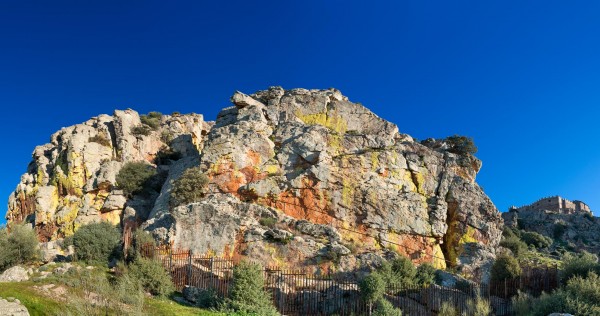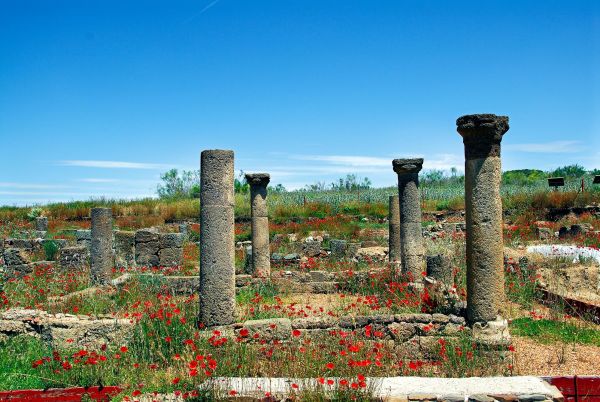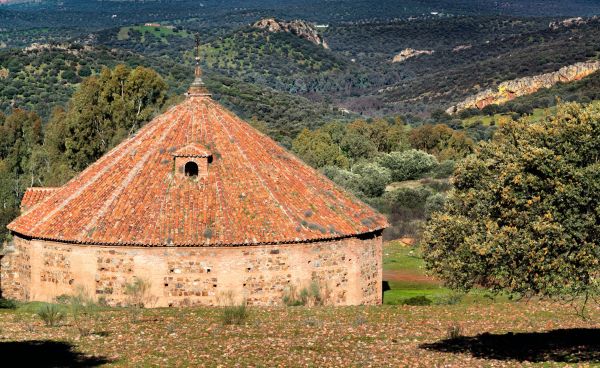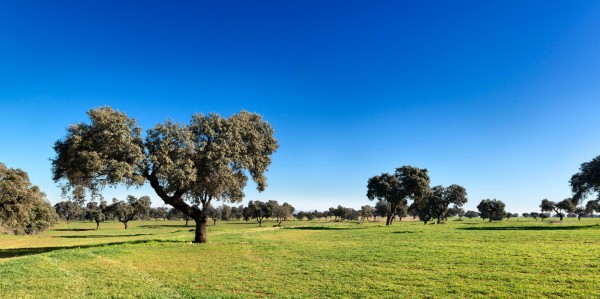Sweeping views of a mining region
Ciudad Real
From Almadén, our morning begins by visiting Chillón, just 5 km away: a town with a rich cultural heritage and offering a pleasant stroll to admire the Saint John the Baptist Church a 16th century Asset of Cultural Interest), also known as the Castle of the Maidens.
In Chillón –even by car– don’t miss the Virgen del Castillo chapel, where you can explore the remains of the fort, the shrine itself or the stunning views from its lookout point, with impressive vistas of the three autonomous communities: Castilla-La Mancha, Extremadura and Andalusia. We can also visit the Sierra de la Virgen del Castillo rock paintings, also declared an Asset of Cultural Interest.
The Sierra de los Canalizos and Sierras de Almadén-Chillón-Guadalmez mountain ranges surrounding Chillón are protected nature reserves; the latter is a special protection area for birds such as the imperial eagle, black vulture or the black stork.
We continue on to Guadalmez, where three valleys steeped in farming tradition meet –Alcudia, La Serena and Los Pedroches– on the banks of the river of the same name, which is the focus of the town’s life and history. The Galápagos Island, where the Valdeazogues and the Guadalmez join, is a uniquely beautiful, unspoilt nature reserve, home to turtles, large birds and an ideal spot for fishing. The Mojonera or Arenas bridge, built in 1927, is said to be the most beautiful in the whole Ciudad Real province.
As is well known, Almadén’s history and region have strong mining ties that date back a long way. Our final stops are evidence of this.
La Bienvenida is located in the heart of the Alcudia Valley, at the foot of the Los Castillejos volcano. This hamlet has an impressive history, dating back to the Roman presence through the town called Sisapo: the control and trade of the mines was exercised from this old city, now an archaeological site with traces of Tartessian, Iberian and Roman cultures. We can see impressive, extremely beautiful mosaics and a good state of conservation.
Located on one of the three volcanic peaks comprising the Los Castillejos countryside - three small, dome-shaped volcanoes that the Romans used as quarries.
We return to Almadén for a final stop at Almadenejos, where we take a look at the Baritel de San Carlos, a globally unique slice of this type of industrial architecture: inside there is machinery that, using a system of pulleys, raised and lowered materials, and drained and elevated the minerals extracted from the “Nueva Concepción” mine. The small hamlet of Gargantiel, 9 km to the north, alongside the river of the same name, has beautiful riverbank scenery with almost unspoilt ash groves and the remains of flour mills.
May also be of interest to you
Castilla-La Mancha Tourism in 2023. All rights reserved.

 365
365



